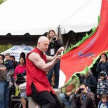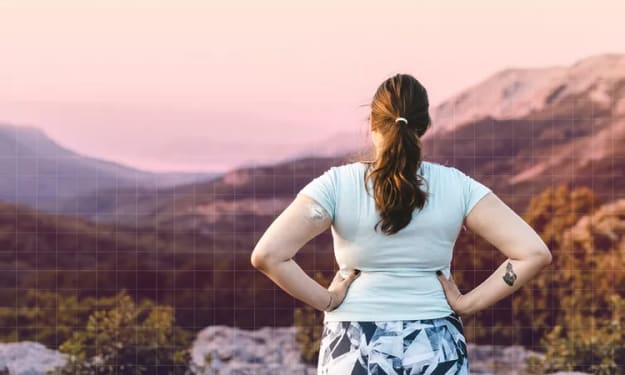Chest and Back Posture in Taijiquan
Aligning the Body in Order to Facilitate Correct Practice

One of the foundational points that is taught to help people learn the appropriate posture for correctly playing Taijiquan (Tai Chi) and the other Chinese internal martial arts is to "collapse the chest and raise the back." Like many things as you get further along in your training, it really is as simple as this. However, it can seem difficult at first. Part of the problem I've had, and I know I've had students struggle with this as well, is the way that this concept gets translated.
As stated above "collapse the chest and raise the back" almost makes it sound like the appropriate posture for Taiji is that of an Igor-like hunchback or angry babushka lady yelling at you from her porch. Obviously; this is not the case.
The body has to rotate around the central line or axis. This is not just the line one can draw on the outside of their body and around like they were marking out a microcosmic orbit. The central line/axis is the core of the core of the body. When you can keep the body aligned with the crown of the head directly above the perineum as well as sitting the shoulders right above the hips. This posture allows you to be able to utilize the entire body as one unit, generating power, instead of trying to over-force an opponent with just a body part like the arm.
Now, as a westerner and a male, I was taught that to have good posture I have to throw my shoulders back and stick out my chest. This sort of military-esque, bird-like puffing is supposed to look confident and strong. In the context of internal practices as well as general health, this builds up a considerable amount of tension in the upper body, including the shoulders and neck and it brings up the body’s energy up around the chest, instead of sinking it to the center of the body. Brining the energy up like that increases stress on the lungs and heart as well as increasing the instances of anxiety feelings and panic attacks. In order to center the energy down, the mind has to focus down at what the Chinese call the Lower Tan Tien (shortened, usually, to just the Tan Tien). This is approximately two inches below the navel and an inch in the body. Focusing the attention there will pull the energy down and allow you to relax the chest.
When that gets relaxed, then you can focus on “collapse the chest and lift the back.” As we look that the chest, again, it is not collapsed as in caved in or having the posture be too forward or the actual chest sunken in. What this means is that one doesn’t pop the chest out and pull the shoulders back. There is a gentle curve with the shoulders; like a crescent moon which includes the chest as the back part of the “C” shape. The shoulders and hips, as well as the crown of the head and perineum, are still lined up so you will have the correct linear posture that is trying to be forced with the military stance while still being relaxed and increasing the ability to use the body as a unified system. This unity of movement and structure can allow you to do literally everything more efficiently, conserving energy and effort and staving off burnout.
The “lifting the back” isn’t necessarily lifting only a piece of the back, making you look like your carrying something heavy across your upper back. The “lifting” is lifting the spine. When the body can sit in the correct posture (which includes the appropriate joint alignment through the hips, knees, and feet) with the shoulders over the hips, etc, and the head being lifted like there’s a hook at the top as well as pulling the chin in slightly, the spine is straightened and this allows space and therefore, ease between the vertebrae. The “lifting” therefore, is the extension and alignment of the spine. This will allow not only a smoother, more correct flow of energy (including the all popular Kundalini energy) but will help the nerves function better as well as allowing the motions of the body to be smoother and more efficient.
On top of the efficiencies and freer flow of energy and nerve impulses, this posture also allows for the organs to be healthier. This might sound odd but think of it: The body won’t be crunching or pinching or extending the internal viscera and machinery when the body is held correctly. On top of that, the exercises in internal practices, including Qigong (Chi Gong) will help gently massage the organs, increasing their appropriate functionality.
With internal arts, like Taiji, as well as with most things, it is the basics, the fundamental things that build and maintain a person’s success as well as allow for a strong baseline to build from. It helps, too, to use critical thinking skills and delve into those basics to understand what they are really saying on an essential level.






Comments
There are no comments for this story
Be the first to respond and start the conversation.